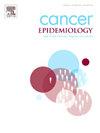美国与前列腺特异性抗原筛查建议相关的前列腺癌发病率、趋势和治疗。
IF 2.4
3区 医学
Q3 ONCOLOGY
引用次数: 0
摘要
背景:美国前列腺特异性抗原(PSA)筛查指南的变化影响了前列腺癌(PCa)的发病率和发病趋势。本研究显示了 PCa 发病率的相应变化,并按肿瘤分期、年龄和种族/人种描述了治疗模式:分析基于 2007-2021 年美国国家癌症研究所 SEER 计划中 17 个基于人群的肿瘤登记处诊断的 777,152 例病例。对发病率进行了年龄调整,并使用年度百分比变化和连接点回归对趋势进行了评估:结果:经年龄调整后的 PCa 发病率(每 10 万人)从 2007 年的 165.8 例降至 2014 年的 101 例(APC=-6.51,pConclusions):了解按肿瘤分期、年龄和种族/民族划分的 PCa 发病率和治疗趋势与模式,可为筛查和治疗方面的公共卫生规划提供指导。本文章由计算机程序翻译,如有差异,请以英文原文为准。
Prostate cancer incidence rates, trends, and treatment related to prostate-specific antigen screening recommendations in the United States
Background
Changes in US prostate-specific antigen (PSA) screening guidelines have impacted prostate cancer (PCa) incidence rates and trends. This study shows corresponding changes in PCa incidence rates and describes treatment patterns by tumor stage, age, and race/ethnicity.
Methods
Analyses were based on 777,152 cases diagnosed in 17 population-based tumor registries in the SEER Program of the US National Cancer Institute, 2007–2021. Rates were age adjusted and trends assessed using annual percent change and joinpoint regression.
Results
PCa age-adjusted incidence rates (per 100,000) fell from 165.8 in 2007 to 101 in 2014 (APC=-6.51, p<0.05) and then rose to 121.2 in 2021 (APC=1.87, p< 0.05). The significant fall and rise in rates appeared in ages 55–69 and ≥70, all racial/ethnic groups (except in Hispanics during 2014–2021), and in local/regional stage. PCa incidence rates by tumor stage, age, and race/ethnicity were presented and discussed. A few PCa cases were identified through autopsy or death certificate among the racial/ethnic groups (0.68 %-1.37 %). Unstaged cases identified through sources other than autopsy or death certificate significantly varied by race/ethnicity, ranging from 4.13 % for non-Hispanic (NH) Whites to 9.5 % for Hispanic (Chi-square p <.0001). In 2017–2021, surgery occurred in 33 % of cases (primarily in local/regional cases, inversely associated with age), radiation in 30 % of cases (increasing with age in local/regional stage cases and decreasing with age in distant stage cases), and chemotherapy in 2 % of cases (<1 % in local/regional stage cases and 9 %-38 % for age groups in distant stage cases). Several racial/ethnic differences in treatment exist, such as NH Blacks (vs. NH Whites) with local/regional disease were significantly less likely to receive surgery and more likely to receive radiation.
Conclusions
Understanding trends and patterns of PCa rates and treatment among patients by tumor stage, age, and race/ethnicity can guide public health planning in relation to screening and treatment.
求助全文
通过发布文献求助,成功后即可免费获取论文全文。
去求助
来源期刊

Cancer Epidemiology
医学-肿瘤学
CiteScore
4.50
自引率
3.80%
发文量
200
审稿时长
39 days
期刊介绍:
Cancer Epidemiology is dedicated to increasing understanding about cancer causes, prevention and control. The scope of the journal embraces all aspects of cancer epidemiology including:
• Descriptive epidemiology
• Studies of risk factors for disease initiation, development and prognosis
• Screening and early detection
• Prevention and control
• Methodological issues
The journal publishes original research articles (full length and short reports), systematic reviews and meta-analyses, editorials, commentaries and letters to the editor commenting on previously published research.
 求助内容:
求助内容: 应助结果提醒方式:
应助结果提醒方式:


